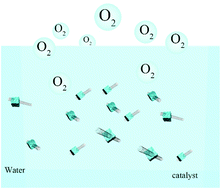Interface engineering triggered by carbon nanotube-supported multiple sulfides for boosting oxygen evolution†
Abstract
Finding an efficient, stable and cheap oxygen evolution reaction (OER) catalyst is very important for renewable energy conversion systems. There are relatively few related research reports due to the thermodynamic instability of transition metal sulfides (TMSs) at the oxidation potential and these are usually focused on single metal sulfides or bimetal sulfides. Metal sulfide mixture systems are rarely studied. The fabrication of a TMS/TMS interface is a feasible method to improve the kinetics of the OER. Here, we constructed TMS hybrid electrocatalysts with multiple phase interfaces for the oxygen evolution reaction, named S-CoFe/CNTs. The results show that the S-CoFe/CNT catalyst exhibits a low overpotential of 258 mV to achieve a current density of 10 mA cm−2, and has high activity in the OER process. Meanwhile, the catalyst also shows a low Tafel slope (69 mV dec−1) and good stability. This can be attributed to the synergistic catalysis of the multiphase interface in the catalyst and the rapid electron transfer pathway brought by CNTs. The new strategy for the synthesis of catalysts containing the TMS/TMS interface provides a new idea and method for the development of efficient and practical water splitting catalysts.



 Please wait while we load your content...
Please wait while we load your content...